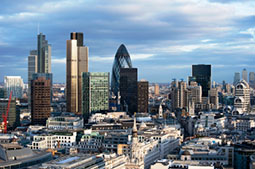Next Auction:
10/4/2025

Next Auction:
10/4/2025


During the pandemic, the flight to the country - ‘The Race for Space’ - was never far from the headlines. It’s not surprising, at the time we were all either working remotely or had been furloughed. It meant we were spending almost all of our time in our homes and those homes, especially flats with no outside spaces, were beginning to feel somewhat claustrophobic. And, with the city’s bright lights dimmed and the commute a fading memory, there were few compelling reasons to stay.
It led to significant numbers deciding they wanted to get away from the crowds and their cramped homes and move somewhere new, somewhere where there was more space and easier access to nature. According to Rightmove, at ‘The Race for Space’s’ peak in August 2021 as many as 46% of Londoners were considering abandoning the capital.
The trend continued, even after the lockdowns had come to an end. We may have all gone back to work, but many of us were still able to do so from home. The number of Londoners planning to remain in the capital for their next move is now back to the kinds of levels we used to see before the onset of the pandemic. The numbers looking to move out have now dropped from 46% to 32%. And, with the pressure to go back to the office growing by the day, that figure is likely to fall further. Transport for London stats show that commuter numbers have been increasing every year since their low point of 1.29bn journeys in 2020-21 and are predicted to reach 3.5bn in 2023-24. That is still, though, nearly 0.5bn below their pre-pandemic levels.
As a result, there has been a positive start to the year in the capital’s housing market, especially when compared to the more subdued spring of 2023.
The number of homes for sale is up 11%, while the number of sales agreed has grown by 10%. Homes are also selling more quickly. The average number of days on the market is currently a day less at 63 than the national average of 64 days. Traditionally, it takes longer for homes to find buyers in the capital than in the rest of the country. Since 2017, London’s time-to-sell average has been faster than the national figure in only 6 out of 85 months.
London’s house prices rose by an impressive 1.4% last month bringing the average price to £696,120 - that's a rise of 2.8% on an annual basis. Some boroughs, though, have seen far larger rises than others. Some of the biggest are occurring in Westminster, whose market had been particularly badly hit by the pandemic, with average prices going up by 9.2% over the last year. Hammersmith and Fulham have also seen significant gains at 8.1%. Some of the more suburban areas, in contrast, have seen the biggest falls, such as Redbridge and Bexley (both down by 1.6%), Ealing (down 1.4%) and Harrow (down 1.2%).
The return to the capital is also having a profound effect on rental prices. they started climbing sometime in advance of house prices, as the rental sector is more mobile and tends to react to changes far faster. London’s rental rises have already peaked back in September 2022, when they were going up by an astonishing 16.1% per annum. Although those meteoric rises have since slowed, rents still went up by 5.3% over the last year and demand remains so high that tenants are facing fierce competition to secure a new home, with an average of 9 people vying for each available property.
If you are looking for a property investment opportunity, the best place you can look for one is at Phillip Arnold Auctions – click here to see what we have coming up in our next auction.
©2025 Phillip Arnold Auctions. All rights reserved.